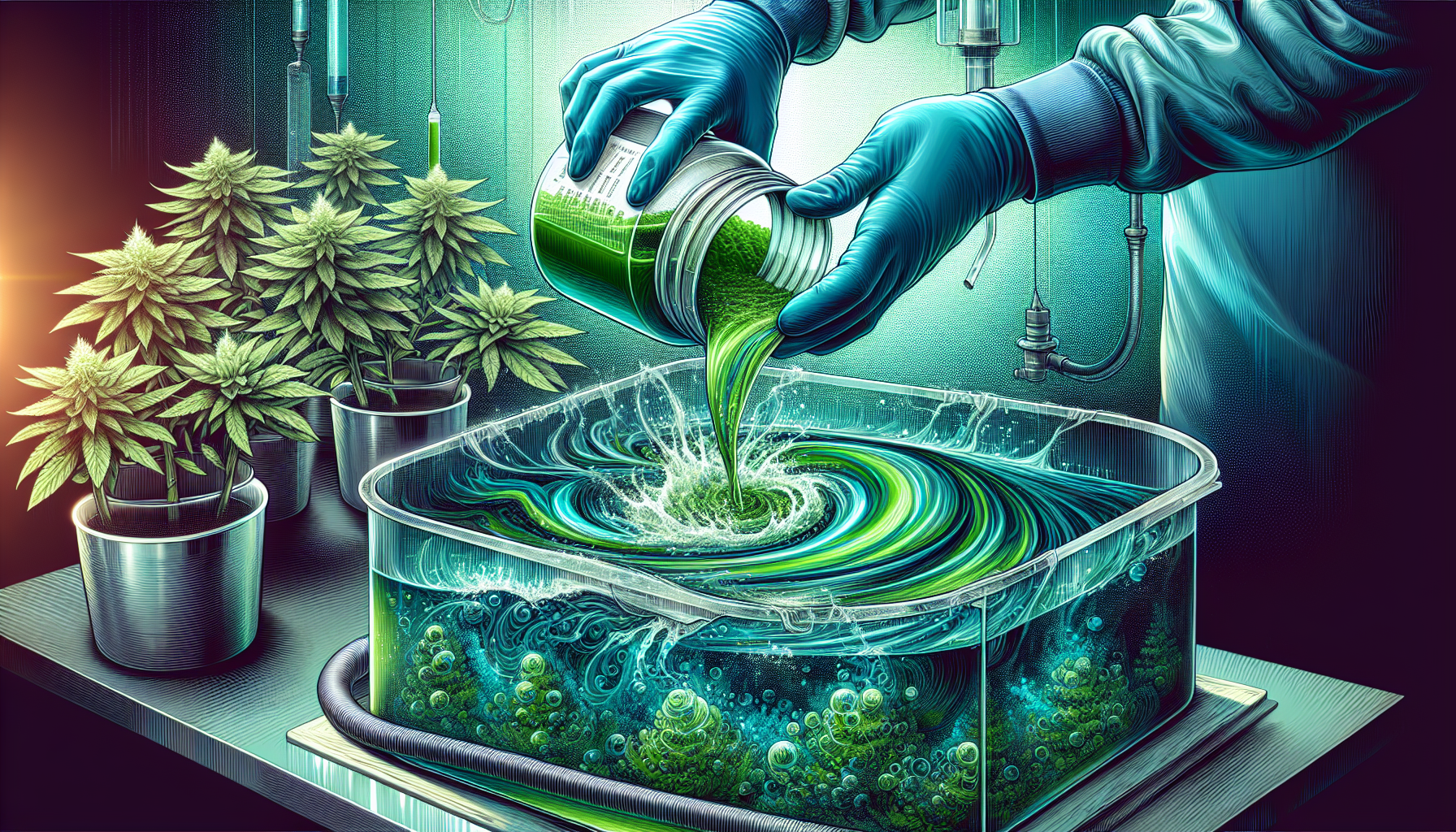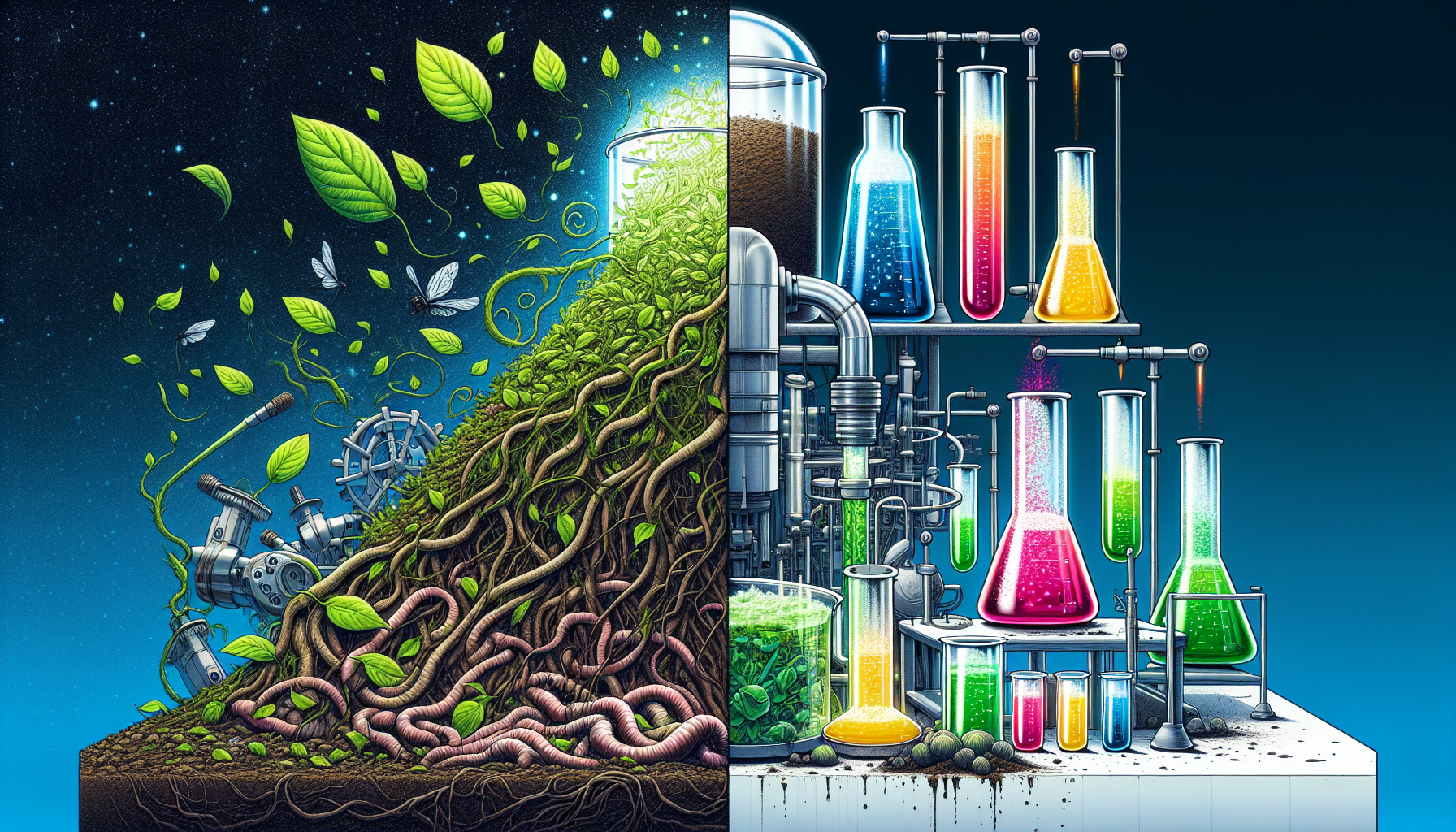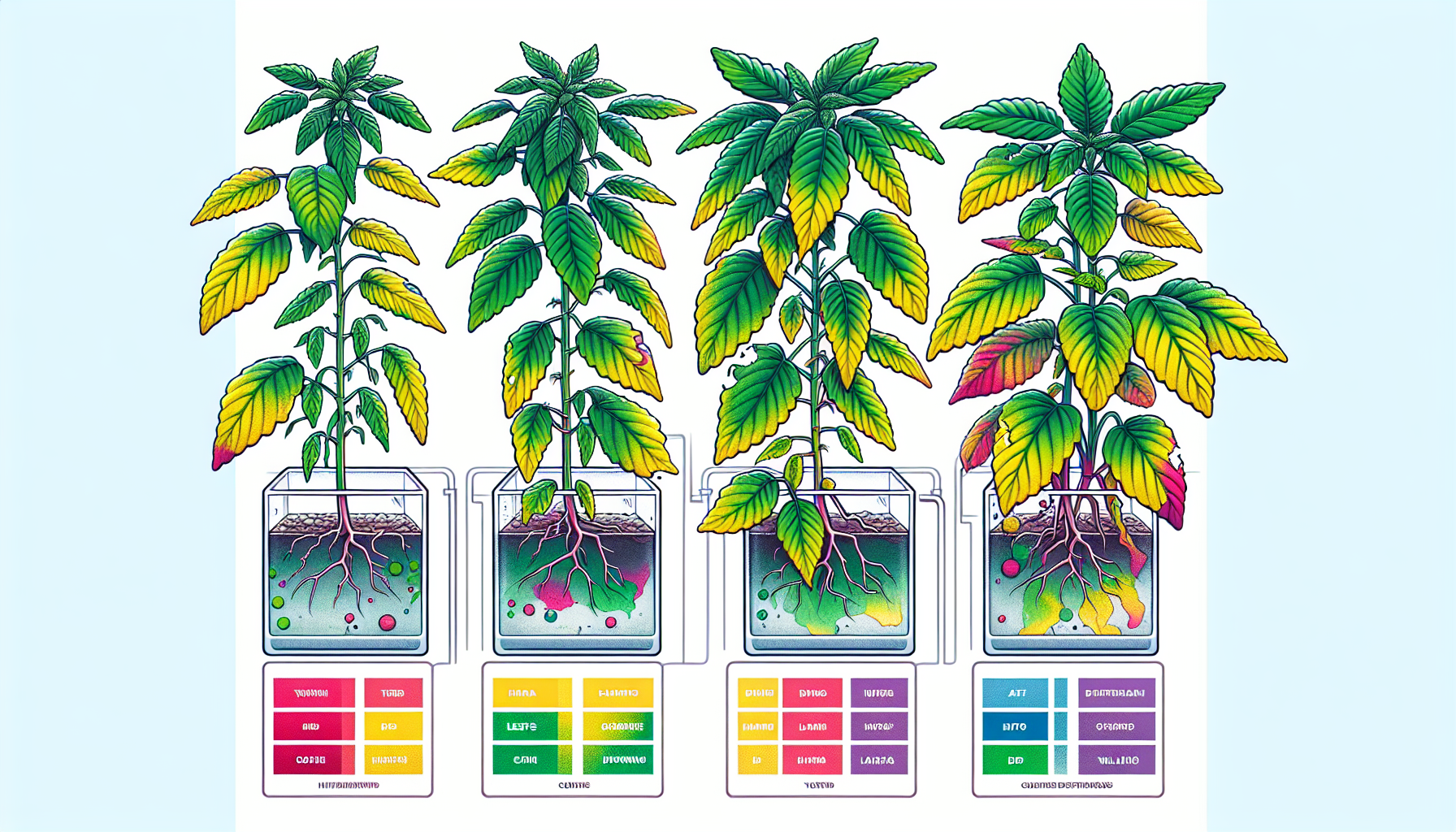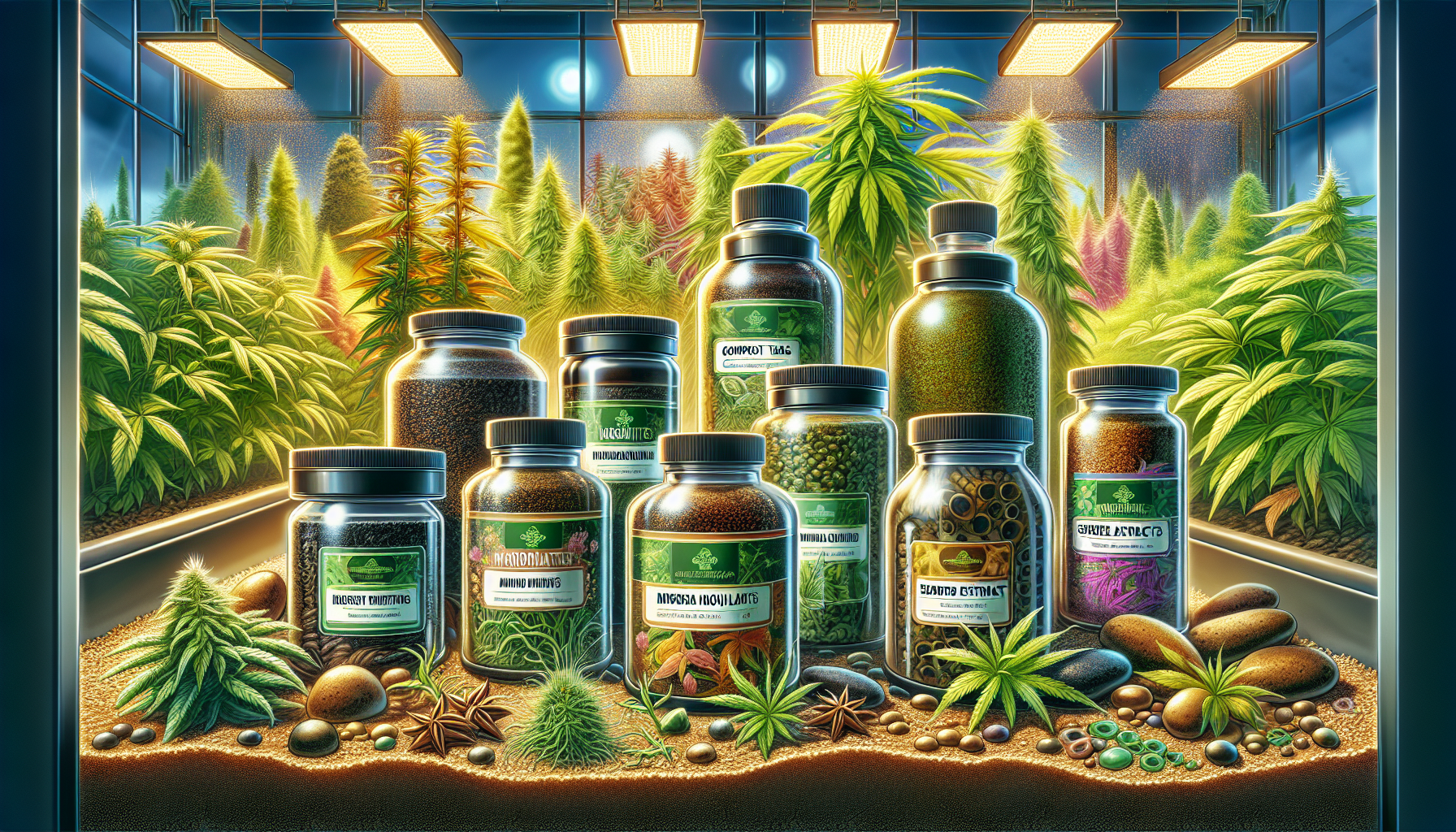Hydroponic Nutrients Guide: Exploring the intricacies of hydroponic gardening requires a solid understanding of nutrients, which are vital for plant vitality and output in setups without soil. This guide streamlines the process to assist you in selecting and utilizing the perfect nutrients necessary for flourishing plant growth.

In the realm of soilless gardening, hydroponic nutrients hold a significant place, contrasting sharply with soil nutrients which are tailored for traditional gardening. Providing the right balance of nutrients in the hydroponic water solution is key to promoting healthy and strong plant growth, emphasizing the importance of nutrient accessibility which is more direct and controllable than in soil-based systems. The beauty of hydroponics lies in the complete control you have over the nutrient balance, allowing you to tailor it to the specific needs of your plants, unlike the fixed nutrient profile found in soil. It’s like being a gourmet chef, but for your plants!
Integrating organic nutrient solutions into hydroponic systems offers the benefits of creating a natural and efficient feeding system, where plants can thrive on organic waste-derived nutrients, such as the Steiner Solution or Hoagland Solution. This approach not only supports sustainable gardening practices but also ensures that plants receive a comprehensive range of essential nutrients in an accessible form.
Comprehension of hydroponic nutrients goes beyond their identification; it encompasses their function in plant growth. They form the building blocks of plant cells, driving vital processes from photosynthesis to nutrient uptake. Without them, plants simply cannot grow. So let’s delve into the essential elements that your plants crave and the role they play in hydroponic systems.
In a hydroponic garden, plants need more than just sunlight and water to flourish. They require an array of essential elements that contribute to their growth. Macronutrients like nitrogen, phosphorus, and potassium are critical for different development stages while micronutrients including calcium, magnesium, and sulfur support various plant functions.
Nitrogen is crucial for fostering leafy greens and robust stems in your plants. Phosphorus plays a subtle yet key role in enhancing root systems and bloom production. Potassium ensures the overall well-being and fortitude of the plant. Even though required in lesser amounts compared to macronutrients, micronutrients have indispensable roles such as aiding photosynthesis processes, activating enzymes involved with growth mechanisms or synthesizing proteins vital for the plant’s health. Together these nutrients form the lifeblood of your verdant hydroponic garden ecosystem.
Hydroponic systems have unique nutrient requirements. Plants in hydroponics are unable to obtain nutrients from soil. Instead, they depend solely on the nutrient solution supplied by you. As such, this solution is vital for the sustenance of your plants grown hydroponically.
It’s essential for plant growth within these systems to have a perfectly balanced nutrient mixture. This includes maintaining an appropriate ratio of macronutrients like nitrogen, phosphorus and potassium, as well as necessary micronutrients. Just as with traditional gardening practices, each type of plant has specific nutritional needs which means customizing your nutrient solutions can greatly enhance growth performance for each variety cultivated in your hydroponic setup.

Choosing the right nutrient solution is crucial for the success of your hydroponic garden. Different plant species demand varying compositions of nutrients, so it’s important that you customize your nutrient mix to suit the specific types of plants in your hydroponic setup.
In the debate of organic vs. synthetic nutrients, incorporating organic nutrients into hydroponic and container growing systems comes with its unique set of benefits and challenges. Organic nutrients can enhance the flavor and scent profiles of your produce, making them more appealing and potentially more nutritious. They also pave the way for achieving USDA organic certification, which can significantly boost the marketability and trustworthiness of your products. However, gardeners must navigate challenges such as preventing salt buildup, which is less common with organic options, and ensuring the quality and consistency of organic nutrient solutions.
To tailor solutions based on different plant varieties’ needs, it’s also critical to alter the composition as per various stages in a plant’s life cycle. Initially, you might need solutions geared towards supporting vegetative growth. Once a plant reaches its flowering phase, its nutritional requirements change. Hydroponics gives you unparalleled control over these variables and enables precise management of what plants are fed at each stage—ensuring they flourish and produce abundantly!
When deciding on nutrient solutions, it’s critical to weigh the benefits and drawbacks of organic versus synthetic options to make a well-informed choice.
Organic fertilizers are favored for their gradual release, allowing plants to absorb nutrients over an extended time frame. This not only nurtures beneficial microorganisms that bolster plant health and resilience, but can also improve the flavor and aroma of your plants. Using organic hydroponic nutrients mitigates salt accumulation and provides transparency regarding their source and contents. Conversely, while synthetic nutrients provide immediate nourishment readily taken up by plants necessitating more frequent application, they lack these advantages. Nevertheless, although there is increasing interest in organics within the industry, availability remains wider for conventional hydroponic fertilizers than for those labeled organic.
You must choose whether to use liquid or powdered nutrients in your hydroponic garden, as each type presents its own benefits and drawbacks, much like the choice between organic and synthetic.
Liquid nutrients come already dissolved and simply need to be watered down before being used. This can save time and simplify the process of preparing your nutrient solution for the garden. On the other hand, because they aren’t weighed down with additional shipping costs due to their water content, powdered nutrients are more economical which often makes them less expensive.
Properly stored powdered nutrients have a long shelf life that could last several years while their liquid counterparts typically expire sooner. These factors should guide you when selecting an appropriate nutrient solution for your hydroponic setup.

Having selected your nutrient solution and acquired an elementary grasp of the required nutrients for your plants, it’s time to focus on optimizing their absorption in your hydroponic garden. This process is influenced by several elements such as maintaining optimal pH levels, ensuring appropriate water temperature, and enhancing oxygen solubility.
Significantly increasing a plant’s ability to absorb nutrients can be achieved through well-oxygenated solutions which also boost overall plant health. Replenishing the hydroponic system with fresh nutrients regularly is critical because plants deplete these over time. With a comprehensive understanding of these factors, you can ensure that your garden benefits maximally from the nutrient solution applied leading to healthier growth and stronger plants.
The availability of nutrients is profoundly affected by the pH levels in a hydroponic system. An imbalance in pH can hinder efficient nutrient absorption by plants, making it essential to keep a close eye on and adjust the pH balance routinely, particularly after introducing new nutrients into your reservoir.
Hydroponic plants Flourish when the solution has a mildly acidic pH between 5.5 and 6.5. To facilitate optimal uptake of nutrients and promote vigorous plant growth, it’s crucial to consistently test and modify the pH as required. This regular maintenance guarantees that plants benefit from an ideal nutrient solution for their overall wellbeing and development.
Maintaining the right water temperature in a hydroponic garden, which should be kept between 18 and 27 degrees Celsius, is crucial for fostering healthy root development and optimal nutrient uptake. It’s essential to note that various crops have distinct temperature needs. For instance, lettuce and spinach favor cooler climates whereas tomatoes and cucumbers flourish in warmer conditions.
Equally important to your hydroponic system’s success is the control of light exposure. Shielding both nutrient solutions and growing mediums from direct sunlight can substantially reduce algae proliferation, thus ensuring a more robust health of your hydroponic crop cultivation setup.

Hydroponic systems come with a unique set of challenges, among which is the erratic nutrient supply characteristic of organic hydroponic operations due to reliance on microbial activity for nutrient release from organic materials. It’s vital for a grower to recognize and mitigate prevalent issues that can affect their plants within an organic hydroponic system such as:
A proactive approach towards these potential setbacks is key in maintaining a thriving organic growing environment and excelling as an adept hydroponic cultivator.
Common nutritional complications faced by those utilizing hydroponics include:
– Root decomposition.
Early detection coupled with immediate rectification measures are crucial steps for safeguarding your crops’ health, ensuring optimal growth, and achieving plentiful yields.
Imbalances in nutrients can greatly affect the well-being of plants, leading to various symptoms such as yellowing foliage, stunted growth, and a decline in harvest quantity. By consistently checking on plant vitality and nutrient content, it’s possible to spot and correct these problems swiftly.
For instance, each deficiency of key nutrients like nitrogen, phosphorus or potassium reveals itself through unique indicators within plants.
In contrast to deficiencies is toxicity. Conditions such as curled up foliage or brown patches are indicative of excessive calcium or magnesium. Frequent testing for pH level control can aid immensely in maintaining optimal balance against excesses and shortages alike.
Two prevalent problems in hydroponic systems are the emergence of algae and root rot. To avoid these issues, maintaining cleanliness and proper care of your system is essential. By regularly removing deceased plant remnants and other organic waste from your hydroponic garden, you can diminish the chances of bacteria and algae taking hold. Pruning plants’ roots will promote better oxygen flow while simultaneously decreasing root rot susceptibility.
Conducting routine inspections for pests is crucial as well. Early detection of pests such as fungus gnats — which can spread root rot-causing pathogens — is key to averting significant harm to your plants.
Preventing light exposure to plant roots by using dark-colored or opaque materials for constructing the grow beds significantly reduces an environment conducive to algae growth within your hydroponic setup.

Acquiring a deep knowledge of nutrients and their management in hydroponics, you should examine the role organic additives can play to boost your system. Examples of such organic substances include:
Incorporating these products can enhance nutrient availability in the soil, activate plant metabolism, and heighten nutrient uptake – all key factors for healthy plant growth.
While integrating these organically derived substances into a hydroponic feeding schedule presents its challenges due to the complexity of managing an organic solution’s balance, the advantages they provide are significant enough to merit consideration. We shall delve into some specific details regarding these beneficial organic compounds.
In a hydroponic system, incorporating organic additives such as compost teas and microbial inoculants can be highly advantageous. These substances enrich the nutrient solution with beneficial bacteria which improve root vitality and increase oxygen uptake.
Adding bacteria to the nutrient solution in your hydroponic setup might initially appear unusual, but these microbes are essential for facilitating plant access to nutrients. They contribute significantly to boosting the general well-being and robustness of your plants within the hydroponic environment, rendering them an excellent enhancement for any such system.
Incorporating seaweed extracts into your hydroponic system serves as an organic fertilizer, offering plants vital nutrients and natural antibiotics that boost health and fortify against diseases. These extracts also have the unique ability to improve the flavor profiles of plants grown in hydroponics by affecting terpene synthesis.
Meanwhile, humic acids act synergistically with microbial inoculants like seaweed to enhance a plant’s uptake of nutrients and accelerate its metabolic processes. This combination supports more vigorous growth within your hydroponic garden, demonstrating how both organic additives and specialized hydroponic fertilizers are essential for maximizing yield and vitality in your plant cultivation efforts.
With a deep understanding of organic hydroponics under our belts, encompassing expertise in managing nutrients within the system and bolstering it using organic additives, we are now prepared to delve into the realm of organic gardening. In drawing this discussion to a close, here is some advice that will steer you toward effective garden management within your hydroponic setup.
For experienced green thumbs and newcomers alike, thorough research stands as your greatest ally. It’s vital to have an intimate knowledge of each plant’s requirements concerning:
Consistent upkeep is crucial for nurturing a thriving hydroponic garden. This involves meticulous monitoring and maintenance of all necessary equipment throughout the entire growth cycle.
Choosing the right hydroponic system is crucial for the prosperity of your hydroponic gardens. Considerations such as garden dimensions, desired plant varieties, and personal gardening proficiency are important when deciding.
If you’re new to hydroponics, starting with straightforward systems like wick or drip methods can be advantageous. As your skills and assurance in managing a hydroponic garden develop, you might progress to more advanced setups such as Ebb and Flow techniques. It’s essential to select a system that aligns with your abilities and requirements from the beginning to ensure successful cultivation within your garden.
Maintaining and observing your hydroponic system on a daily basis is crucial for its productive performance. This involves:
It’s essential to clean the hydroponic reservoir consistently and refresh the nutrient solution once every 7 to 10 days to ensure that the system remains clean and operates effectively. A neatly kept system stands a better chance of producing an exuberant and flourishing garden.
We’ve journeyed through the fascinating world of organic hydroponics, explored the essential role of nutrients in soilless gardening, and discovered how to manage and enhance a hydroponic system. We’ve also discussed common challenges and how to troubleshoot them effectively. With this knowledge, you’re now equipped to embark on your own organic hydroponics adventure! Remember, successful hydroponic gardening is a journey of learning and discovery. So stay curious, keep experimenting, and enjoy the rich rewards of your hydroponic garden!
Hydroponics, a technique for growing plants, offers the advantage of requiring less space and water. It also allows for year-round cultivation of produce with the possibility of obtaining organic certification.
This approach to plant cultivation is not only sustainable but also highly efficient when it comes to organic hydroponics.
Plants grown in hydroponic systems necessitate a mix of both macronutrients and micronutrients to flourish properly. This includes elements such as nitrogen, phosphorus, potassium, calcium, magnesium, and sulfur. These nutrients are vital in fostering the growth and well-being of the plants within these hydroponic environments.
To inhibit the proliferation of algae in your hydroponic setup, maintain cleanliness by removing any deceased plant debris and opt for grow beds that are either darkly colored or crafted from dense materials to obstruct light access to the roots. By doing so, you’ll create an environment less conducive to algal development within your hydroponic system.
It is essential to consistently monitor and adjust the pH levels in hydroponic systems, as a correct pH balance significantly influences the plants’ ability to absorb nutrients efficiently. This maintenance of proper pH is vital for achieving optimal health and growth in hydroponic plants.
Enhance the uptake of nutrients and boost the metabolic processes in your plants within a hydroponic system by adding organic substances like humic acids, seaweed extracts, microbial inoculants, and compost teas.
Introducing these elements can supply extra nutrients that support robust growth and development.
Grow 100 planting sites, monitor ph levels, water temperature, water levels, and control light and water cycles.
© Copyright 2024 Nutraponics. All Rights Reserved.